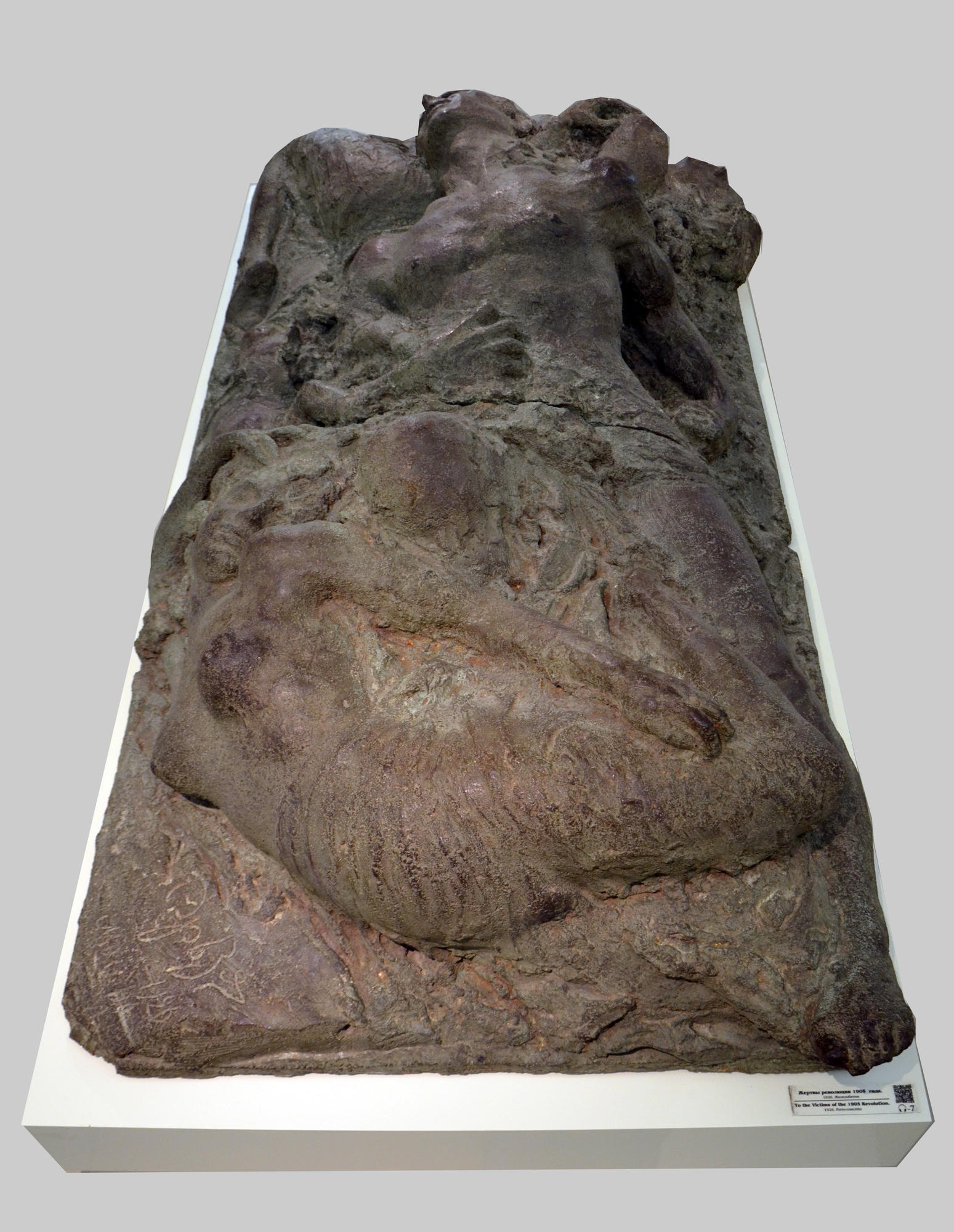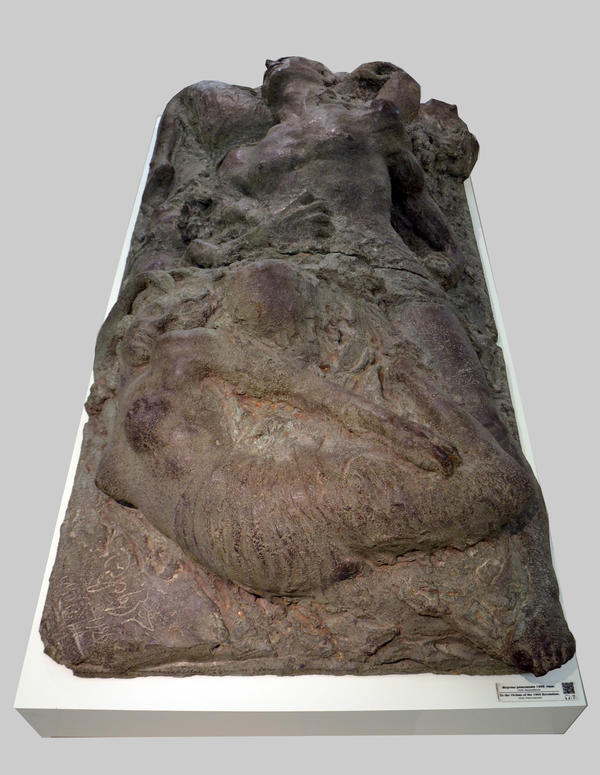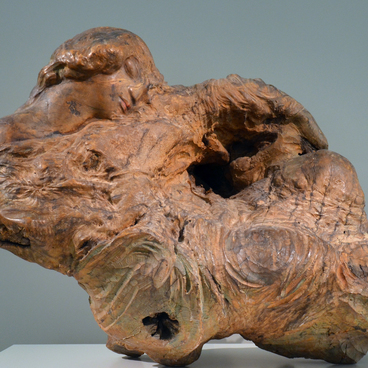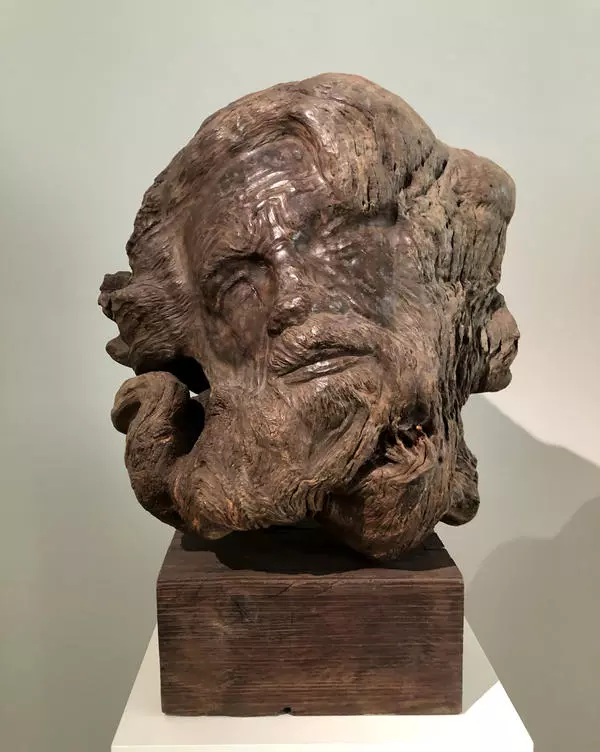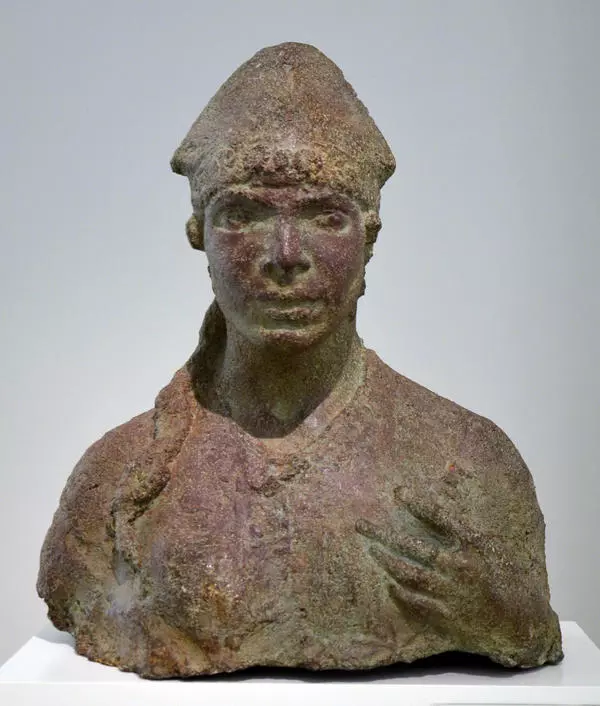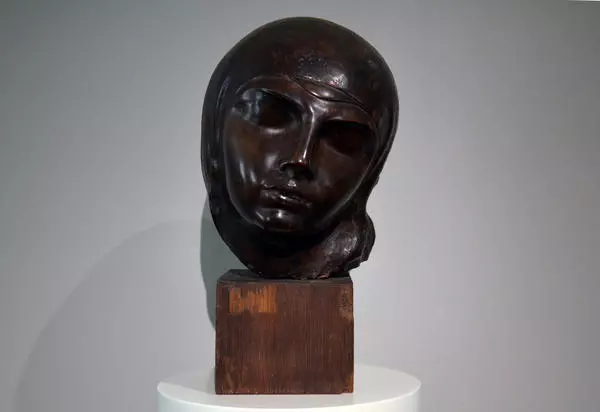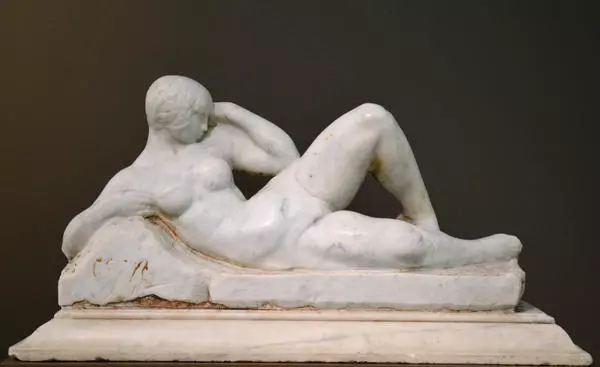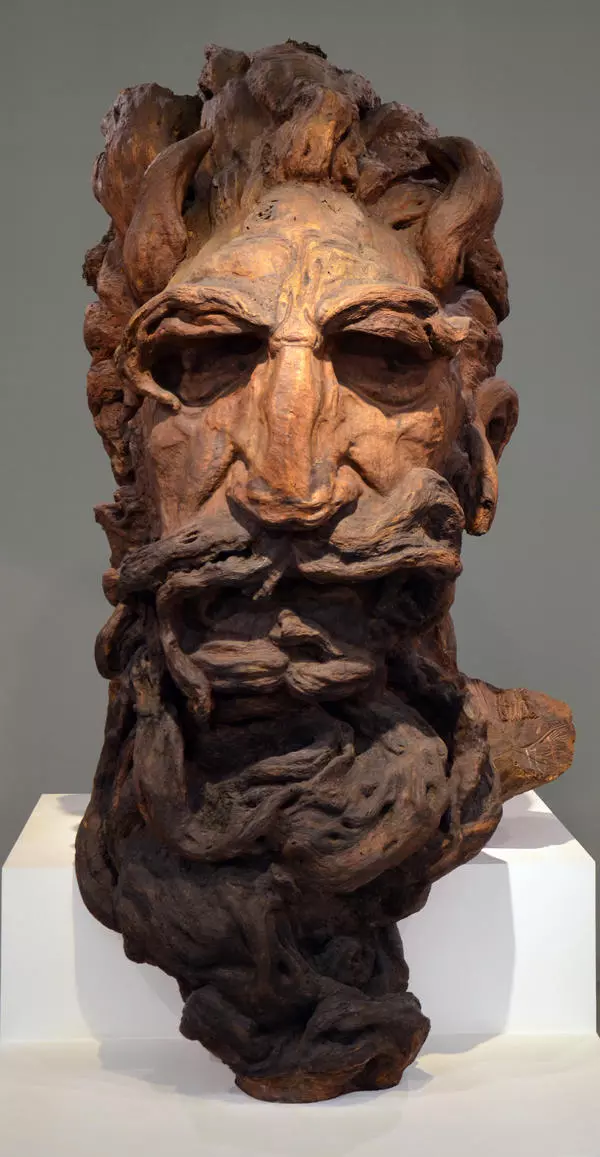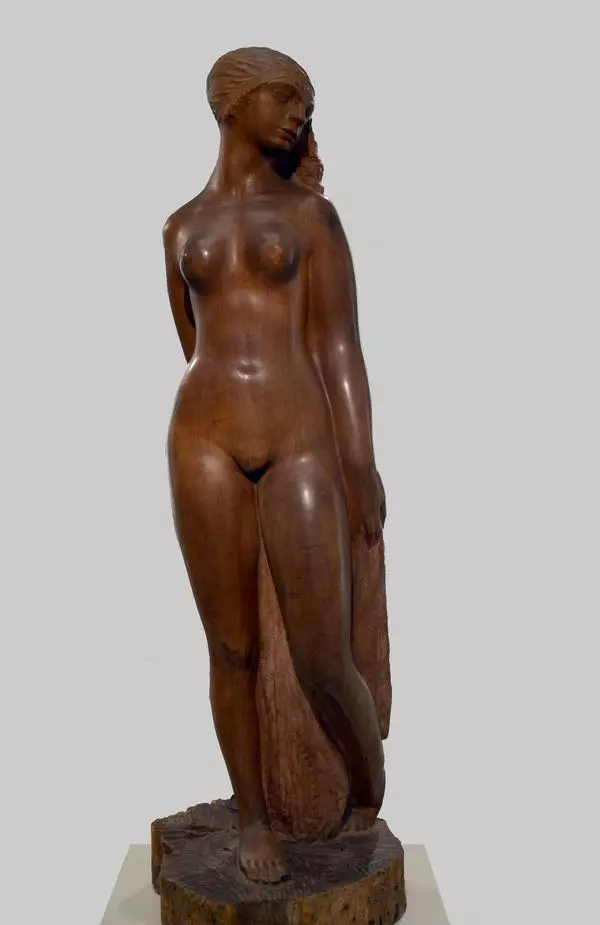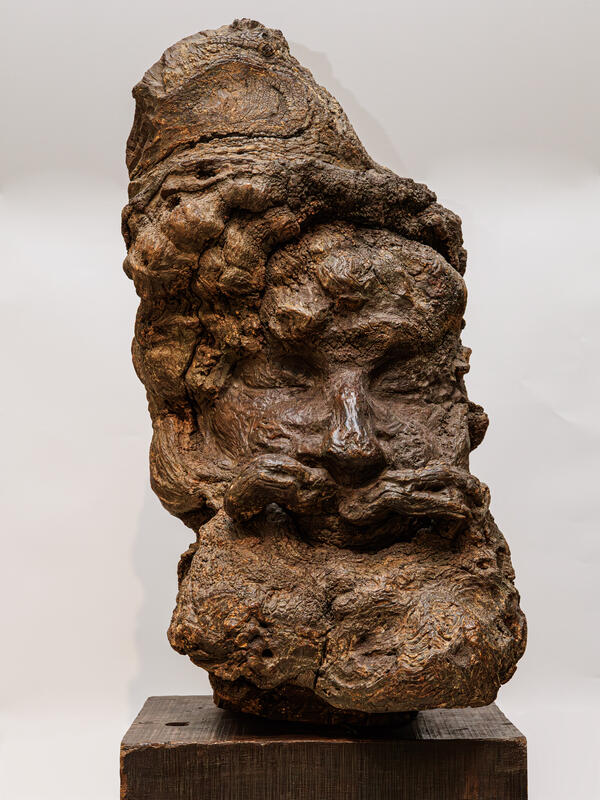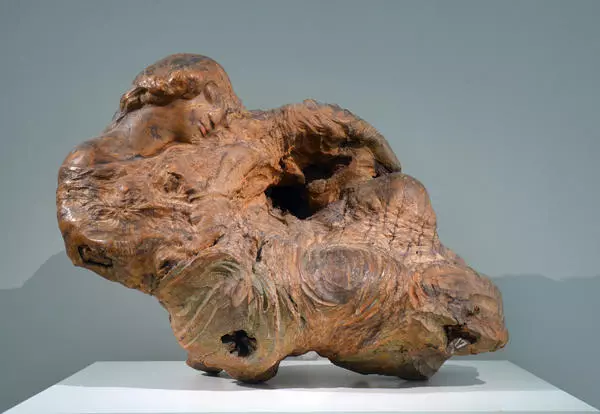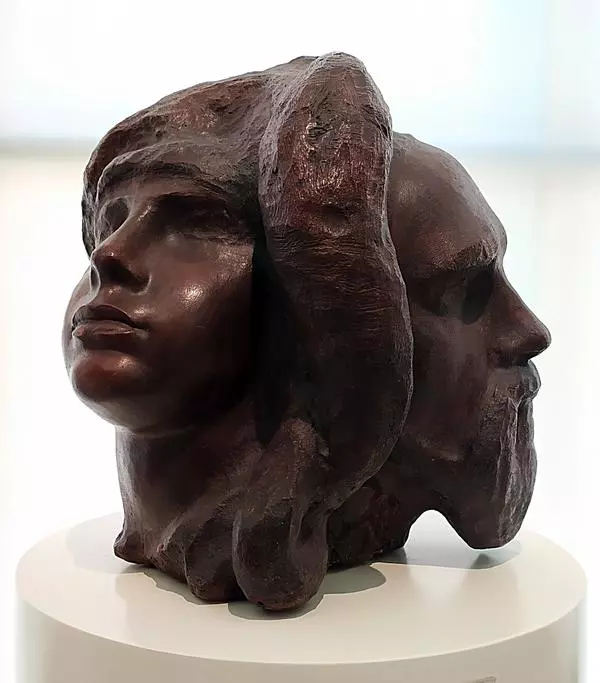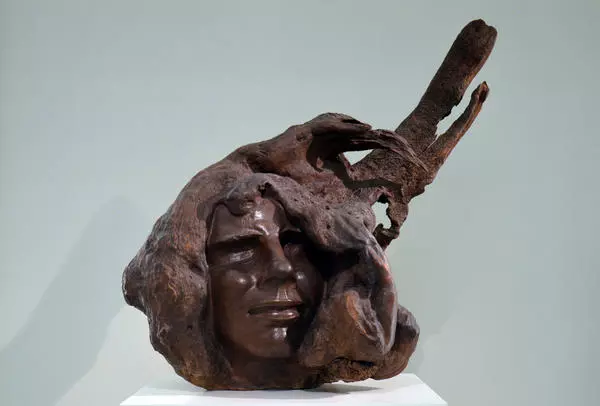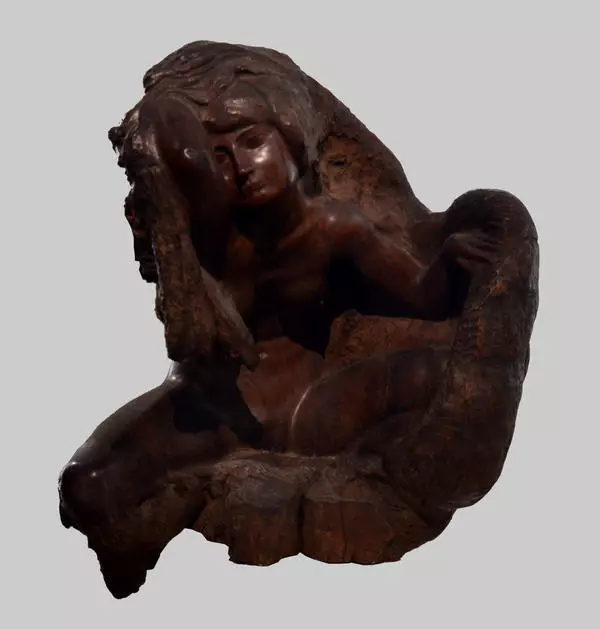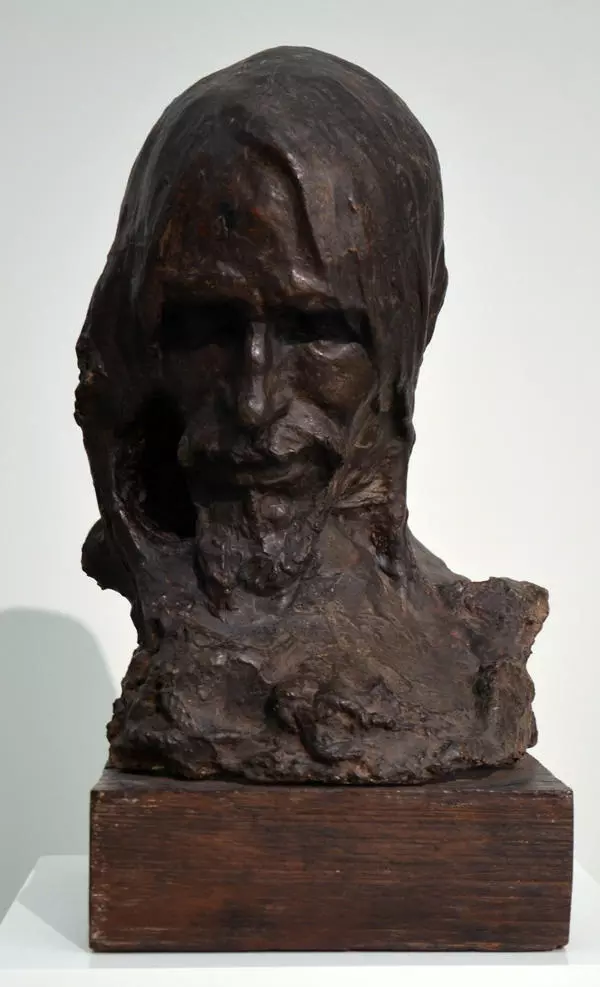The first Russian revolution of 1905 was a surprise and a shock for the Russian Empire. Its catalyzer was the ‘Bloody Sunday’, when an unarmed demonstration of the capital’s workers led by priest George Gapon was shot at by the police. The deaths of the demonstrators were not in vain, liberal reforms were conducted as a result: the State Duma and the State Council were established, and on October 17, 1905 the Manifesto which gave civil liberties to Russian citizens was issued. Those events were vividly reflected in the imagination of the young artist Stepan Erzia. He thought over the image of the fallen victims of dispersal of the demonstration for many years, and in 1926 after the events of the October Revolution and the Civil War he embodied his artistic vision of the tragedy in the sculpture Victims of the Revolution of 1905.
This work is an example of a rare multi-figure composition created by the sculptor. Lifeless bodies of a man, two young women and a child are depicted on the wide slab. Unusual postures of the figures, a picturesque approach to revealing the texture, increased attention to light and shadow fill the work with increased expression, make it especially emphatic. The defeated figure of a man is placed in the center along the diagonal of the composition. The breath of death has already touched his face, but in his fists, still clenched, there is a force that cannot be broken, and the intention not to give up. Along the sides the sculptor placed half-naked twisted women’s bodies. The little figure of a baby in the center, depicted fragmentarily, enhances the tragic impression of the work. The composition is original and dynamic, only the circular examination fully reveals the artistic features and contents of the work.
The sculpture Victims of the Revolution of 1905 was shown at the State Exhibition of Contemporary National Sculpture in 1926, along with other works by Stepan Erzia, united by the revolutionary theme: People’s Tribune and Prisoner.
The sculpture Victims of the Revolution of 1905 is made of the material invented by the sculptor, with the conditional name “ferro-concrete”. It became one of the best pieces of art by the sculptor, included in the gold fund of his work. According to biographers, the work was conceived during Stepan Erzia’s stay in the Urals. Many sculptures by the master have a kind of rhythm, which makes them in a sense similar to music. The monument Victims of the Revolution… sounds like a requiem, like a chorale.
This work is an example of a rare multi-figure composition created by the sculptor. Lifeless bodies of a man, two young women and a child are depicted on the wide slab. Unusual postures of the figures, a picturesque approach to revealing the texture, increased attention to light and shadow fill the work with increased expression, make it especially emphatic. The defeated figure of a man is placed in the center along the diagonal of the composition. The breath of death has already touched his face, but in his fists, still clenched, there is a force that cannot be broken, and the intention not to give up. Along the sides the sculptor placed half-naked twisted women’s bodies. The little figure of a baby in the center, depicted fragmentarily, enhances the tragic impression of the work. The composition is original and dynamic, only the circular examination fully reveals the artistic features and contents of the work.
The sculpture Victims of the Revolution of 1905 was shown at the State Exhibition of Contemporary National Sculpture in 1926, along with other works by Stepan Erzia, united by the revolutionary theme: People’s Tribune and Prisoner.
The sculpture Victims of the Revolution of 1905 is made of the material invented by the sculptor, with the conditional name “ferro-concrete”. It became one of the best pieces of art by the sculptor, included in the gold fund of his work. According to biographers, the work was conceived during Stepan Erzia’s stay in the Urals. Many sculptures by the master have a kind of rhythm, which makes them in a sense similar to music. The monument Victims of the Revolution… sounds like a requiem, like a chorale.
